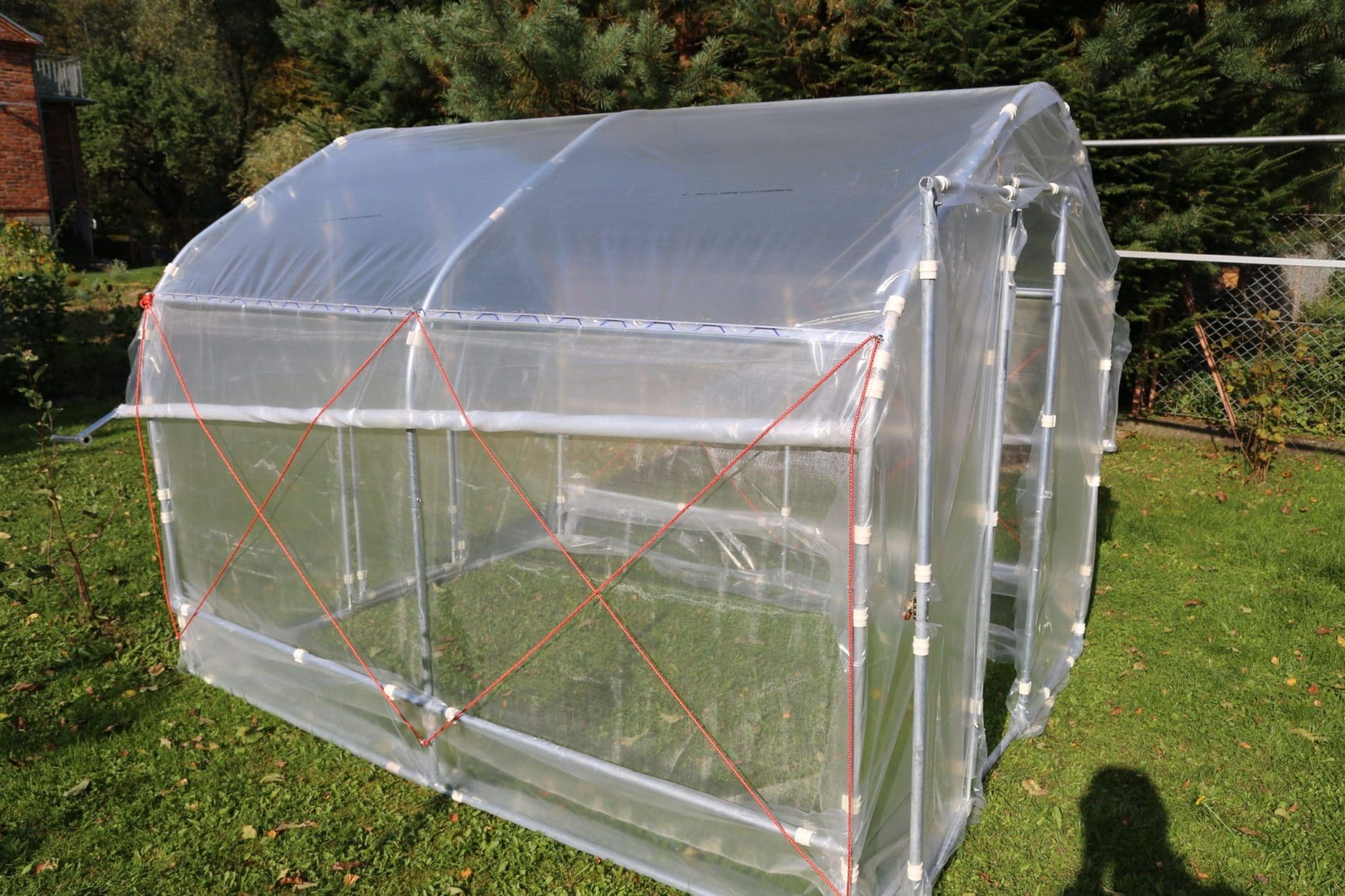If you’re new to greenhouse gardening and ventilating, you’re probably thinking, “How much ventilation does a greenhouse need?” The answer is that the plants in your greenhouse need all the ventilation they could get to grow properly. However, there are some days when your greenhouse will need extra ventilation, like during hot summer months.
Growing your crops in a greenhouse is extremely helpful. It allows you to extend the growing season so you can continue to grow your crops even during the cold winter season. However, you may need to add supplemental heat and light, depending on the type of plants you’re growing. Additionally, keep in mind that high heat and humidity are as damaging as a dry and cold environment.

With that said, proper ventilation is the key to maintaining normal temperatures and good air quality inside a greenhouse.
How to Properly Ventilate a Greenhouse During High Temperatures and Humidity
A well-ventilated greenhouse removes excess heat that could be damaging to your plants. Smaller greenhouses are more susceptible to extreme temperatures. If the temperature inside your greenhouse exceeds 90 degrees F, your plants will wilt. Good ventilation allows you to eliminate excess heat and keep greenhouse temperatures steady. For smaller greenhouses, you can place vents or use more sophisticated ventilating systems.
Humidity is good for starting seeds, but too much of it can also be harmful. Excess humidity is the perfect breeding ground for fungal infections and other diseases. High humidity plus high temperatures is a recipe for disaster. With a good ventilating system, you’ll be able to maintain normal humidity levels inside your greenhouse.
Two Types of Ventilation Systems
Before setting up your mini greenhouse, the first thing you need to decide whether you’re going to use mechanical or natural ventilating systems.
Natural ventilation systems
Natural ventilation systems rely on thermal buoyancy wind for air movement instead of powered fans. Most gardeners place roof and sidewall vents, so when the temperature rises inside the greenhouse, the hot air will escape through the vents. And as the hot air goes out, cooler air is drawn into the greenhouse through the other side of the vents. Wind plays a huge role in natural ventilation. As the hot wind goes out through the ridge vents, the sidewall vents bring fresh air into the greenhouse.
Mechanical ventilation systems
As the name suggests, this type of ventilation system uses fans or other mechanical systems to ventilate your greenhouse. If you’re looking for more control over your ventilation, a mechanical system is the one for you. However, many gardeners choose a combination of mechanical and natural ventilation. These systems are automated, so your environment inside your greenhouse stays consistent regardless of the outdoor weather. Additionally, choosing a mechanical system allows you to have a sealed greenhouse, preventing unwanted pests and critters from destroying your plants.
Reasons Why a Mini Greenhouse is a Great Option
There are many perks when it comes to greenhouse gardening. You can deal with inclement weather and pests, giving you more control over the growing conditions of your plants. If you’re still on the fence, here are some of the reasons why you should consider getting a mini greenhouse:
Keep your plants safe from pests
As mentioned, pests like aphids, cabbage worms, and beetles, along with small critters like rabbits, rodents, and squirrels would love to munch on your produce. Keeping your plants in an enclosed space keeps them safe from pests and diseases that can infect your plants.
Shield your plants from inclement weather
If you live in areas with unpredictable weather, you may benefit more from greenhouse growing. If you grow your plants inside, they’ll remain safe and protected from hail, high winds, blizzards, and heavy rain. Keep in mind that one bad storm can wipe out your entire garden.
Gardeners with limited space
Are you interested in growing your own crops but you don’t have enough space? A small greenhouse kit is a great alternative for people without much garden space. The standard size of small greenhouses is around 6ft., but if this is still too big for you, there are smaller options that could fit your balconies, patios, and even on your tabletops. Even though these greenhouses are small, they offer the same features as regular-sized greenhouses.
Ideal for beginners in greenhouse gardening
If you’re a beginner in greenhouse gardening and you want to learn more about it, using a mini greenhouse is a great way to start. Before you purchase or build a bigger one, you can learn how a greenhouse works and how plants grow inside.
Start planting early
With a mini greenhouse, you’ll be able to start plant growth even before the cold season begins in your area. After the weather warms and gets better, you can transfer these plants into your garden and harvest the product earlier than you intended.
The Bottom Line: How Much Ventilation Does a Greenhouse Need?
In case you’re wondering about what the bottom line is to “How much ventilation a greenhouse need?”, the simplest answer is that the ventilation inside your greenhouse depends on the plants you’re growing (their temperature preferences) and your outdoor weather conditions. Make sure to assess your plants and your climate before you start planting. If you live in areas with unpredictable weather, it’s best to add natural or mechanical ventilation.
